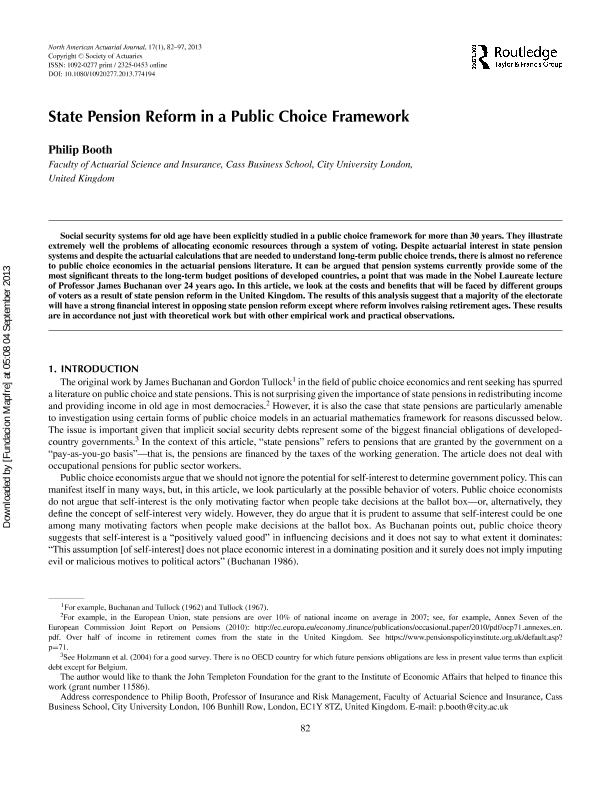State pension reform in a public choice framework

Contenido multimedia no disponible por derechos de autor o por acceso restringido. Contacte con la institución para más información.
| Tag | 1 | 2 | Valor |
|---|---|---|---|
| LDR | 00000cab a2200000 4500 | ||
| 001 | MAP20130026862 | ||
| 003 | MAP | ||
| 005 | 20130905143824.0 | ||
| 008 | 130904e20130304esp|||p |0|||b|spa d | ||
| 040 | $aMAP$bspa$dMAP | ||
| 084 | $a6 | ||
| 100 | 1 | $0MAPA20080063030$aBooth, Philip | |
| 245 | 1 | 0 | $aState pension reform in a public choice framework$cPhilip Booth |
| 520 | $aSocial security systems for old age have been explicitly studied in a public choice framework for more than 30 years. They illustrate extremely well the problems of allocating economic resources through a system of voting. Despite actuarial interest in state pension systems and despite the actuarial calculations that are needed to understand long-term public choice trends, there is almost no reference to public choice economics in the actuarial pensions literature. It can be argued that pension systems currently provide some of the most significant threats to the long-term budget positions of developed countries, a point that was made in the Nobel Laureate lecture of Professor James Buchanan over 24 years ago. In this article, we look at the costs and benefits that will be faced by different groups of voters as a result of state pension reform in the United Kingdom. The results of this analysis suggest that a majority of the electorate will have a strong financial interest in opposing state pension reform except where reform involves raising retirement ages. These results are in accordance not just with theoretical work but with other empirical work and practical observations | ||
| 773 | 0 | $wMAP20077000239$tNorth American actuarial journal$dSchaumburg : Society of Actuaries, 1997-$x1092-0277$g04/03/2013 Tomo 17 Número 1 - 2013 , p. 82-97 |

